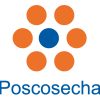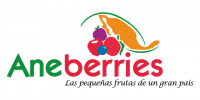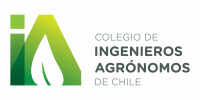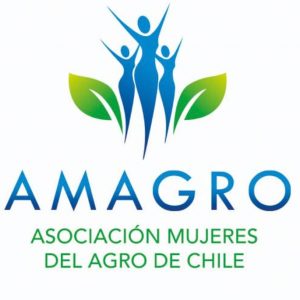
Bienvenidos a My Blue Project
Que pasa con la Calidad?, A que responde?, Como mejorarla?
Por: Paula del Valle; Consultor Internacional en Calidad, Postcosecha e Innovación.
En los últimos días dadas las problemáticas que han ido surgiendo en el mercado por la calidad de los arribos en destino, han surgido cuestionamientos relacionados con cómo llevar el proceso y la gestión de la calidad no solo desde el punto de vista de la fruta; si no desde el punto de vista del recurso humano que hace gestión de ese proceso.
En años pasados, fue una discusión permanente la necesidad de que los equipos técnicos vivieran el proceso en planitud, desde huerto a destino final para comprender a cabalidad como llevar el proceso en origen y que no todo tiene la capacidad de viajar y llegar en una condición al menos aceptable. Es fundamental experimentar hasta en el retail, de manera de verificar y comprender donde estamos fallando y que podemos mejorar a partir de aquello.
Esa parte es fundamental para comprender que, por mas que trabajemos con una genética excelente no podemos dejar todo a la genética, hay parte del trabajo que es responsabilidad de ese factor humano como pieza clave.
Hay aspectos relacionados con aquello, que al parecer, aunque son revisados cada temporada no terminamos de entender e internalizar y la importancia de eso radica en que podemos ser exitosos o fracasar.
Esos aspectos que dicen relación con la cadena productiva y con los momentos oportunos de cosecha, gestión de mano de obra, etc, y cada temporada alrededor del mundo en los diferentes orígenes y realidades se hace ver la misma situación.
Repasemos algunos aspectos claves, a veces olvidados por el enfoque que le damos a las cosechas, a las temporadas y el cumplimiento del forecast de producción;
Cuando hablamos de Postcosecha de frutas, debemos entender que corresponde a una serie de factores que están incluidos en la cadena productiva; pero si hay un punto clave y que no hay que excluir, es la calidad de la materia prima y el hecho de que estamos trabajando con seres vivos, respiran.
La respiración, la especie, la variedad, el grado de maduración, la temperatura y la composición de los gases ambiente que rodean a los frutos son factores que influyen en este proceso. Durante la respiración, juegan un papel fundamental las sustancias de reserva con las que cuentan los frutos, como los azúcares y el almidón, que se oxidan y realizan dos procesos: consumir oxígeno y producir dióxido de carbono; dando paso a la maduración y posterior senescencia.
Se produce un deterioro fisiológico, como consecuencia del proceso natural de la maduración. A raíz de ello, se pierden sustancias de reserva, se altera la permeabilidad de las membranas, se acumulan productos tóxicos, se desarrolla o aumenta la actividad enzimática que induce la destrucción de tejidos y estructuras, y se provoca una pérdida de apariencia, textura y peso.
Cualquier cosa que se haga en postcosecha no va a modificar la calidad de origen de la materia prima, solo conserva lo que recibimos, mantiene y preserva; sea cual sea la tecnología que utilicemos. Dicho esto, debemos entender que es fundamental el proceso posterior a la cosecha, la separación de la fruta de la planta y tiempo de permanencia en el huerto.
Lo que más deteriora es mantener nuestra fruta a altas temperaturas en el huerto, expuesta, por cada hora que permanece a alta temperatura perdemos agua, peso, firmeza, por lo tanto partimos con fruta con un nivel de deterioro mayor; en el caso de algunos berries hasta 1,5% de peso!! por hora dependiendo de la temperatura!, y sobre 6% ya podemos observar una deshidratación evidente, entonces si no tenemos un enfriamiento a tiempo y adecuado ya estamos hipotecando nuestra fruta, y aun ni siquiera la embarcamos!!.
Lo anterior se relaciona directamente con la teoría del 80/20; el 80 es el frío y el 20 pero no menos importante son todas las tecnologías con las cuales podemos apoyar para mantener en una mejor calidad/condición nuestra fruta. La decisión de que tecnología utilizar es importante, y varía según tránsito, destino, especie, objetivo; importante decisión ya que esto contribuirá en gran medida a conservar la fruta tal como el día en que se cosechó o lo más cercano a ello, para que llegue a destino y sea recibida por el consumidor final, generando satisfacción por el producto escogido y una fidelización en futuras compras.
Pero, además, tener muy claro que la tecnología no es magia, responde a una materia prima y eso va a determinar el resultado del ciclo de comercialización, por que al final del día, es un negocio que debe ser rentable, y si queremos llegar a vender ese producto, debemos también entender que nuestro consumidor sabe lo que quiere, y va a pagar solo por un producto de calidad.
No existe una única “receta”, los procesos y su gestión son particulares y así debemos trabajarlo, de acuerdo a cada realidad para tratar de hacer el mejor trabajo para la fruta, y llegar a un final exitoso.
«Calidad no es una norma, un protocolo, o un área de la compañía, es un proceso integral que va orientado a cada una de las etapas para tener una buena vida de postcosecha de nuestra fruta«.
What is happening with quality? What is the answer? How can it be improved?
By: Paula del Valle; International Consultant in Quality, Postharvest and innovation.
In recent days, given the problems that have been arising in the market due to the quality of arrivals at destination, questions have arisen related to how to carry out the process and quality management not only from the point of view of the fruit; but from the point of view of the human resource that manages that process.
In past years, there was a permanent discussion about the need for technical teams to experience the process in its entirety, from the orchard to the final destination, in order to fully understand how to carry out the process at origin and that not everything has the capacity to travel and arrive in at least acceptable condition. It is essential to experiment even in retail, in order to verify and understand where we are failing and what we can improve from that.
That part is essential to understand that, even if we work with excellent genetics, we cannot leave everything to genetics; there is part of the work that is the responsibility of that human factor as a key piece.
There are aspects related to that, which apparently, although they are reviewed each season, we do not fully understand and internalize and the importance of that lies in the fact that we can be successful or fail.
These aspects are related to the production chain and the opportune moments of harvest, labor management, etc., and each season around the world in different origins and realities the same situation is seen.
Let’s review some key aspects, sometimes forgotten by the approach we give to harvests, seasons and compliance with the production forecast;
When we talk about Post-harvest of fruits, we must understand that it corresponds to a series of factors that are included in the production chain; but if there is a key point and that should not be excluded, it is the quality of the raw material and the fact that we are working with living beings, they breathe.
Respiration, species, variety, degree of ripeness, temperature and the composition of ambient gases surrounding the fruits are factors that influence this process. During respiration, the reserve substances that the fruit has, such as sugars and starch, play a fundamental role. They are oxidized and carry out two processes: consuming oxygen and producing carbon dioxide, giving way to ripening and subsequent senescence.
Physiological deterioration occurs as a consequence of the natural ripening process. As a result, reserve substances are lost, the permeability of the membranes is altered, toxic products accumulate, enzymatic activity develops or increases, leading to the destruction of tissues and structures, and a loss of appearance, texture and weight is caused.
Anything done in post-harvest will not modify the original quality of the raw material, it only preserves what we receive, maintains and preserves; whatever the technology we use. Having said this, we must understand that the post-harvest process, the separation of the fruit from the plant and the time spent in the orchard are fundamental.
What causes the most deterioration is keeping our fruit at high temperatures in the orchard, exposed. For every hour that it remains at high temperatures, we lose water, weight, firmness. Therefore, we start with fruit with a higher level of deterioration; in the case of some berries, up to 1.5% of weight!! per hour depending on the temperature!, and over 6% we can already observe evident dehydration, so if we do not have a cooling in time and adequately, we are already mortgaging our fruit, and we do not even ship it!!.
The above is directly related to the 80/20 theory; 80 is the cold and 20, but no less important are all the technologies with which we can support to maintain our fruit in a better quality/condition.
The decision of which technology to use is important, and varies according to transit, destination, species, objective; This is an important decision, as this will greatly contribute to preserving the fruit as it was on the day it was harvested, or as close to that as possible, so that it reaches its destination and is received by the final consumer, generating satisfaction with the chosen product and loyalty in future purchases.
But, in addition, it is very clear that technology is not magic, it responds to a raw material and that will determine the result of the marketing cycle, because at the end of the day, it is a business that must be profitable, and if we want to sell that product, we must also understand that our consumer knows what he wants, and will only pay for a quality product.
There is no single “recipe”, the processes and their management are particular and we must work accordingly, according to each reality to try to do the best job for the fruit, and reach a successful end.
« Quality is not a standard, a protocol, or a company area, it is an integral process that is oriented to each of the stages to have a good post-harvest life of our fruit».


















